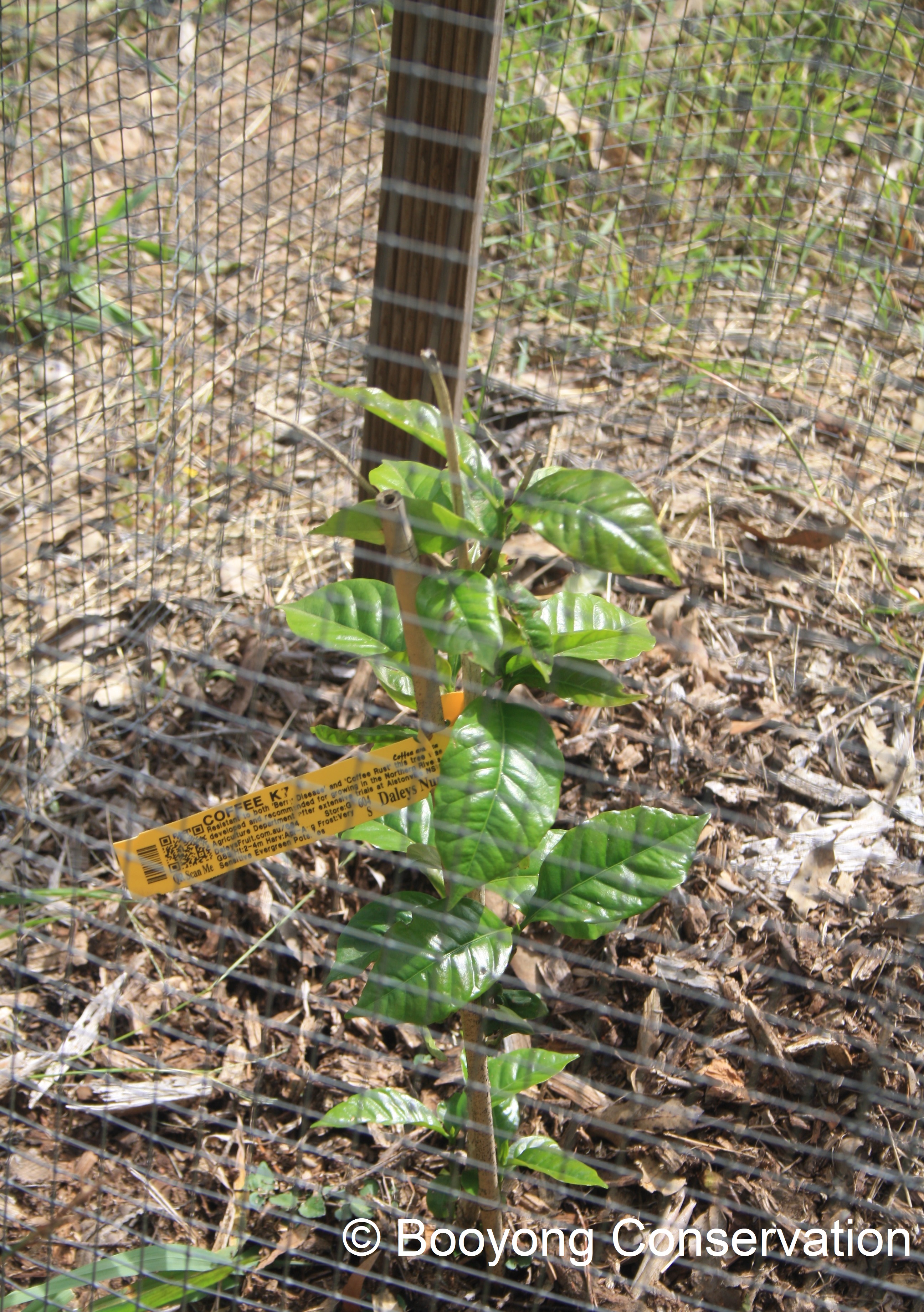One thing we’ve learnt since having Booyong and starting our food forest is the importance of choosing climate appropriate plants. The K7 coffee plant we have chosen from Daleys has been developed and recommended for growing in the Northern Rivers Area by NSW Agriculture Department due to it’s resistance to both ‘Berry Disease’ and ‘Coffee Rust’, it is also salt and frost intolerant.
Its botanical name is Coffea arabica, and according to . A. Jones, an agricultural officer at Kenya’s Coffee Research Station in the 1950s it originates fron Kenya and and was one of two trees selected in 1936 by Mr. R. H. Walker from French Mission trees on his Legetet Estate in Muhorohi.
This evergreen plant prefers Tropical and Subtropical zones, growing 2-5m high in favoured conditions. It is self-pollinating and prefers temperatures above 5 degrees. Coffee K7 can be grown in pots or in the ground in sun or shade (50-80%) and likes moderate watering. Good drainage is also important, with a Neutral (6.6-7.3pH). To encourage dense growth at Booyong the tree will be lightly pruned and staked to remain upright. A high potassium fertilizer will be regularly applied to encourage growth and we will ensure it is surrounded by thick mulch to discourage weeds and assist in improving the soil. Coffee trees like a lot of potash, a lot of nitrogen, and a little phosphoric acid.
As a companion plant, Coffee plants grow well when interplanted underneath a banana tree. The leaves of the banana tree provide shade for the coffee plant, while the bark from the banana tree acts as a mulch and fertilizer.
We will expect this plant to flower in 2021, 2-3 years after planting and the large beans can be harvested in May, June, July, August, September. I am so excited to know that we will be able to grow our own coffee, one plant will not be enough for our coffee needs because Brett and I drink a cup of coffee each morning, apparently 30 plants are required to obtain appropriate amounts. Not sure if we’ll get that many, however once we know the conditions are right, we will purchase additional plants and move toward coffee sustainability.
Flowers are said to be small, white and jasmine scented followed by green berries that turn yellow then red when mature. Each berry contains two coffee beans and as they dry and the beans will turn black. Beans are meant to be popped out of the red outer layer within 24 hours of picking and soaked in water to ferment for 48 hours (floating ones are not viable). Wash them and place them in the sun to begin the drying process which will take up to 30 days depending upon the conditions. The husks will begin to split and reveal the inner bean which will expand in the pan when roasted at 200 – 230 degrees in the oven. They can then be grinded and stored in the fridge for use.
It’s going to be a work in progress and we will certainly ensure we share this experience with you.
